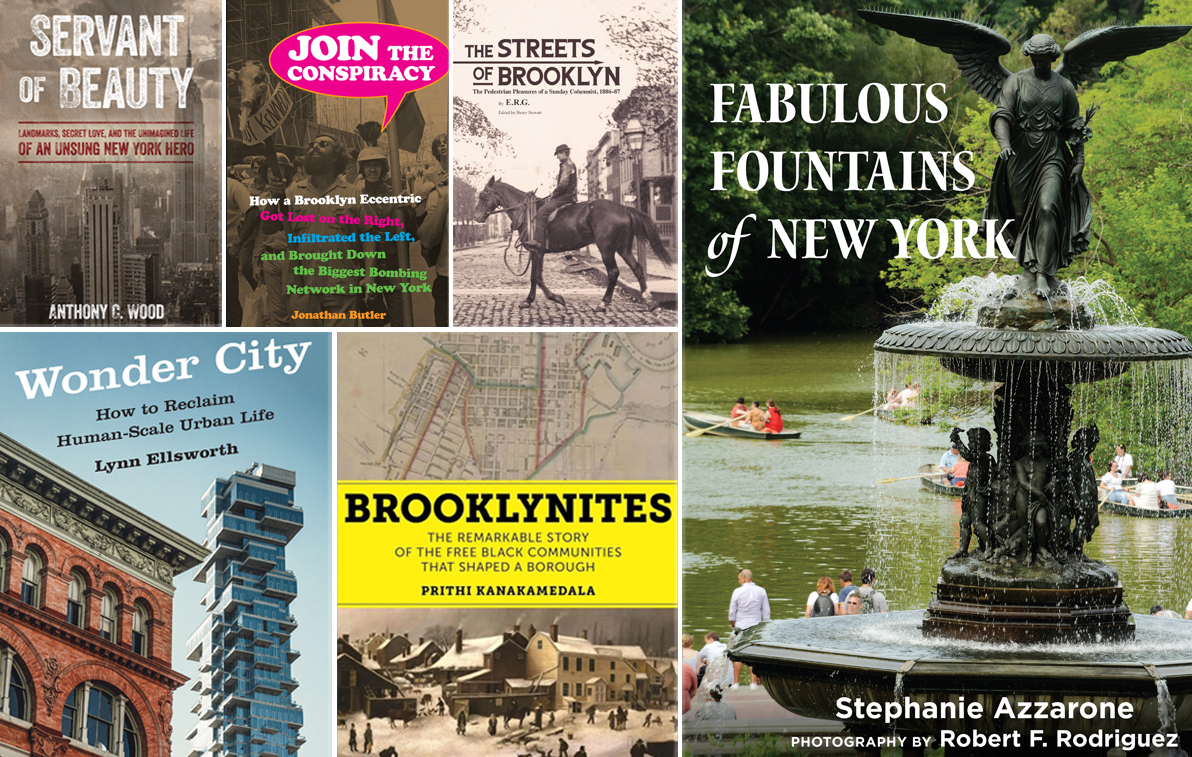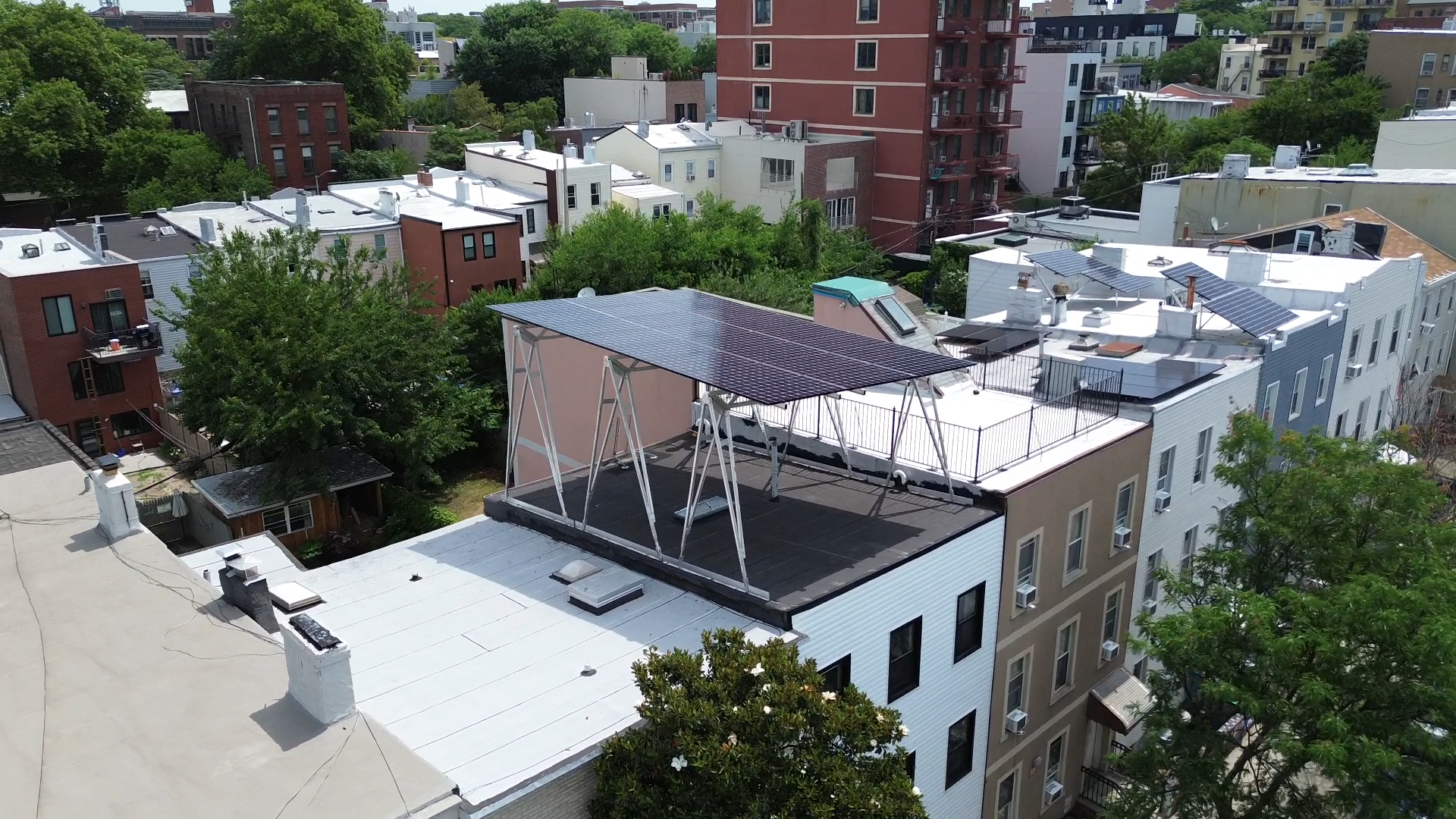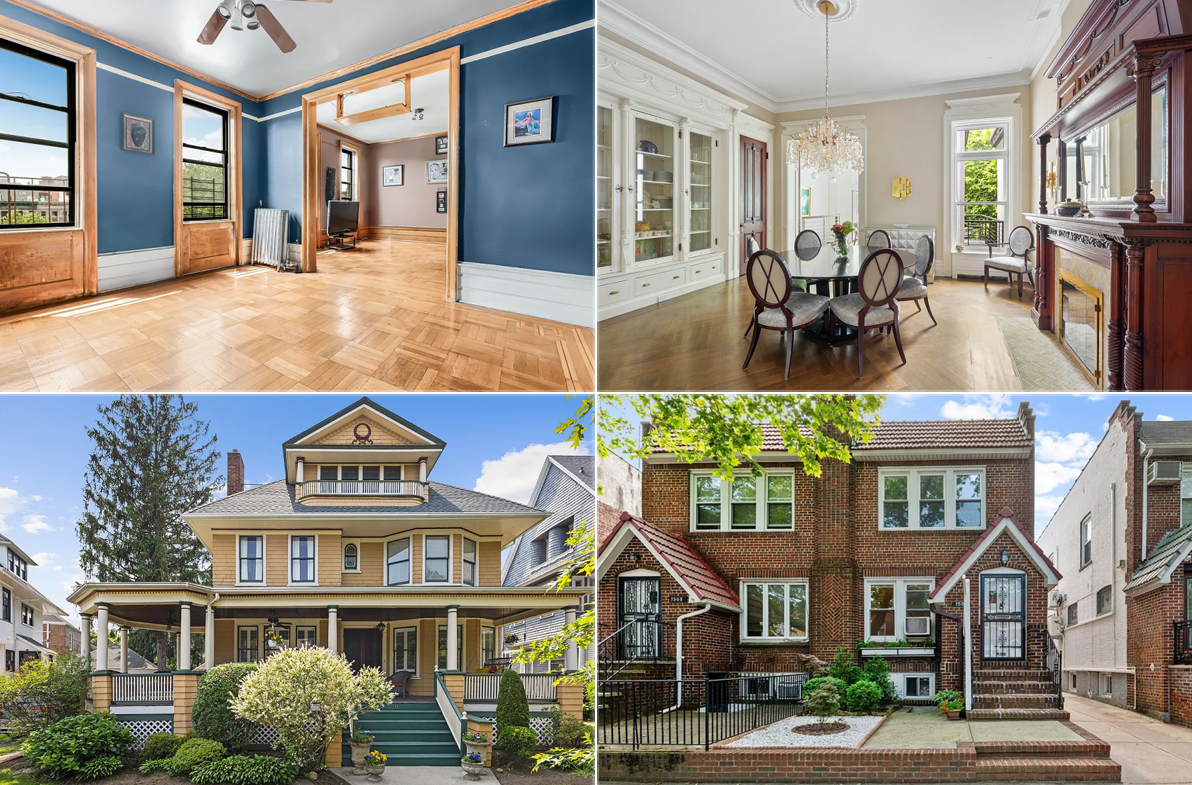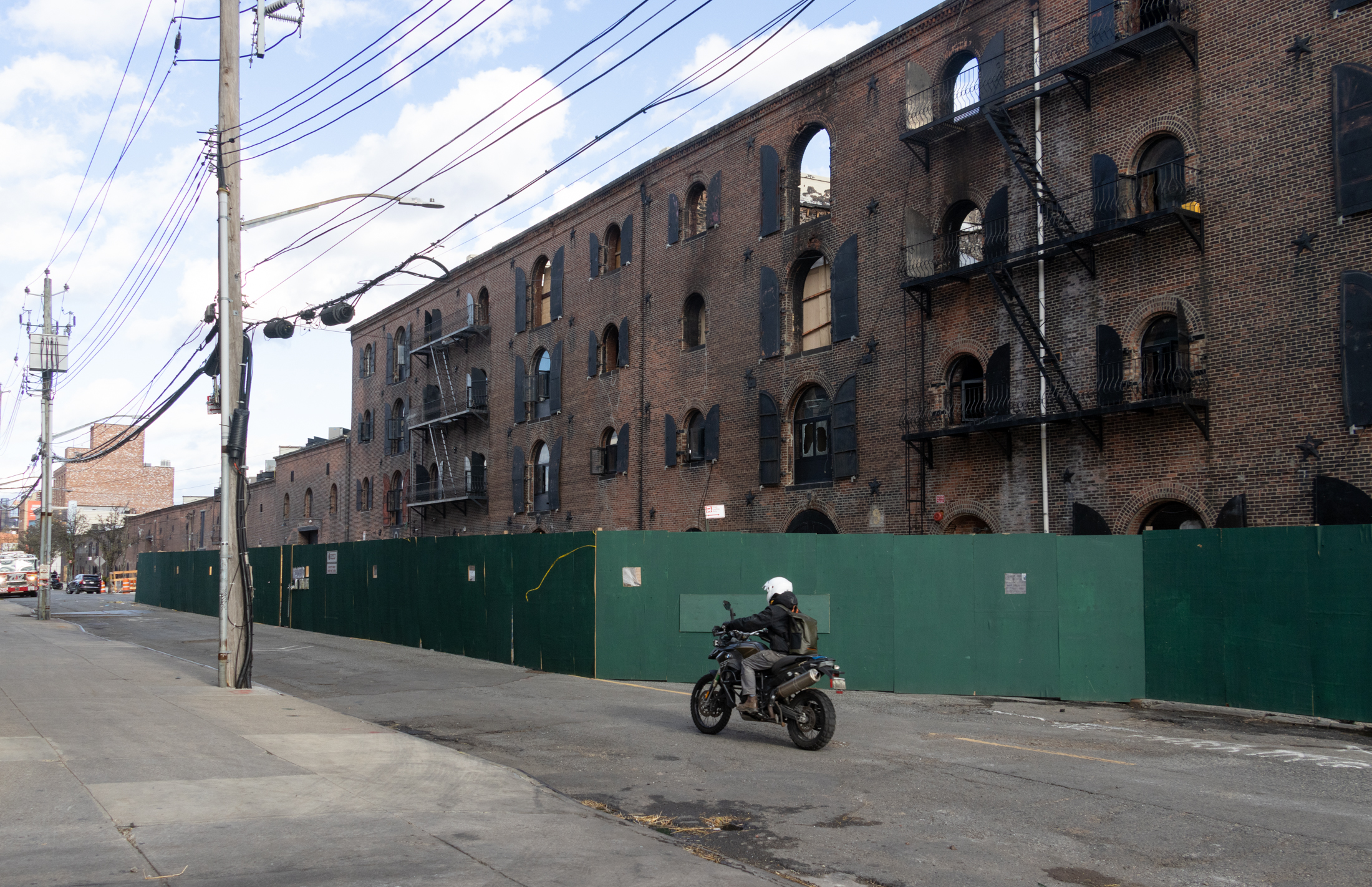Walkabout: The Real Estate Game
Most people are aware that most of the row house blocks we now treasure throughout Brownstone Brooklyn were built as speculative housing. Then, as now, only the very wealthy were able to commission a home to be built specifically and specially for them. Most people let one of the hundreds of builders working in the…


Most people are aware that most of the row house blocks we now treasure throughout Brownstone Brooklyn were built as speculative housing. Then, as now, only the very wealthy were able to commission a home to be built specifically and specially for them.
Most people let one of the hundreds of builders working in the borough build the homes, and then they bought. The building boom of the late 19th and early 20th century gave us row upon row of houses in all of the rapidly growing neighborhoods of Brooklyn.
This is also true of homes in the more suburban neighborhoods, as well, the only difference being the style of home. Because of all the competition, builders and developers competed to produce the best house for the dollar, and because of that, over 100 years later, we now enjoy a pretty high degree of excellence, in terms of overall design, materials used, and original features. The more upscale the development, the better the interior and exterior craftsmanship, and the more innovations and amenities.

A list of names shows that the Irish dominated the building in our borough at the turn of the 20th century. Some men developed a relatively few parcels of land, some created neighborhoods. William Reynolds, featured last week, was one of the largest.
There were also some women whose names are credited as developers. This prompts further investigation, as some were fronting for husbands, while some were powerful in their own right.
Some developers built homes in many different neighborhoods, without preference, while others seemed to gravitate to one specific neighborhood, usually the one they called home. Some of these men were also architects, and they designed and built their own projects, while others hired architects to design.

Often, that architect’s name is lost to history, but sometimes an architect with a proven name or track record was touted in the advertising or announcement accompanying the project. I’ve featured many of them here, men like Axel Hedman, Parfitt Brothers, George Chappell, Magnus Dahlander and many, many others who made a good living designing for the builders of Brooklyn.
There were also architects who developed the properties they themselves designed. Montrose Morris did this repeatedly, as did Amzi and Henry Hill. The Hills also designed for other builders, as well.

What I find fascinating is to look at the advertising in issues of the Brooklyn Eagle, and see the housing when it was brand new, and up for sale. The building boom in Park Slope, Bedford, St. Marks, Prospect Heights, and Prospect Lefferts Gardens, produced a wealth of real estate ads, all touting the virtues of the new houses.
As development grew in the suburban neighborhoods of Bay Ridge, Flatbush, and Bensonhurst, the ads for these properties followed suit, as well. Unlike the real estate ads of today, bursting with color pictures, the ads of yesterday had to rely more on description. But the features being described haven’t changed much in their desirability: bathrooms, kitchens, woodwork, central heating, built-in, and floors. Today’s photo collection is a sampling of ads from the Eagle
A partial list of the bigger developers, by neighborhood.
Bedford (Bedford Stuyvesant and Stuyvesant Heights) William H. Burhans, John Fraser, William H. Reynolds, Charles W. Betts, Walter Clayton, Eli Bishop, John F. Ryan, Charles Tritschler
Bedford/St. Mark’s District (Crown Heights North) William H. Burhans, John Fraser, John J. Magilligan, John A. Bliss, DH Fowler, Charles G. Reynolds, William R. Pierce
Prospect Heights: William Flanagan, Jeremiah Gilligan, William H. Reynolds, Thomas Butler,
Park Slope John J. Magilligan, William Flanagan, Jeremiah Gilligan, John Gordon, Thomas Fagan, William Gubbins, J. Doherty, John Monas.
Prospect Lefferts Gardens William A. A. Brown, Fenimore Building Co, Frederick P. Norris, Eli H. Bishop.




[Images via the Brooklyn Eagle]





W.A.A. Brown built the four story houses on Midwood I and the three story houses (including mine)on Midwood II in PLG. [$11.000 & $7,250).
I have a framed 1901 ad for these houses that sounds pretty desperate; Brown kept his sales office, on the corner of Midwood & Flatbush, “open Sundays and Holidays all day. Evenings until 9.” It must have been a real buyers market.
BTW, Eli Bishop built the Axel Hedman limestones on Maple II. When I bought my house in ’74 thesr were still referred to as “Bishop houses” by old-timers.
I live in an original two family. The bottom two floors resemble a “one family ” in its layout. In other words, you have the kitchen and family room-dining room on the ground floor, then a “parlor floor” on the second floor with higher ceilings and ornate moldings.
But there are also two bedrooms and an original bathroom on the parlor floor, which you would not find in a one-family.
The upper floor is laid out like an apartment or flat, which it is, and there is no door separating it from the rest of the house.
If you go East to Bushwick, you will also find original three families, four families, and six families. The three family houses have one apartment or flat per floor, and they do have doors between the interior and exterior apartments. The three families have interior halls, whereas the four and six families do not.
Otherwise, the layouts of all these places are very similar. As far as I know, most of these places were built in the 1890s.
Many rooms are designed for multiple purposes, much like tenement apartments. I had long thought such flexible layouts were the invention of modernist architects designing for middle and upper class clients, such as Frank Lloyd Wright, but apparently not.
Finishes were cheaper on middle class and working class buildings. For instance, our doors and trim are pine and poplar, painted with a semi-transparent glaze to resemble mahogany on the parlor floor and in the hall, and (faux) oak on the interior first and third floor rooms. The bathrooms, kitchens, and many other areas have bead board instead of tile. Floors are pine.
Here’s a pitch every realtor should crib:
“Do not, I beg of you, buy until you’ve seen it.”
The Park Slope real-estate market was subtle back in the day, wasn’t it?
Indiana limestone is still quarried today. It is a very uniform stone, and weathers pretty well in NYC’s historically acidic environment (much, much better that local marbles and limestones, which were in common use from the early to mid 1800s). Indiana limestone became very popular around the turn of the century, when it was the limestone of choice for Beaux Arts buildings in general and McKim, Mead & White in particular.
I think railroad was the most common means of transport.
People are still paying three times their annual salary.
“yeah this just proves that brooklyn row houses are JUST AS cookie cutter as suburban subdivisions are these days.. just with different layouts and appliances.”
This is objectively a fact. My place is a McMansion of its time. Cheapest door knobs anybody ever saw.
Difference between then and now is low ceilings, small windows, flimsy moldings, and the hideous “great room” kitchen-family room combination.
I have seen new suburban developments with high ceilings and lots of windows I thought were very attractive. Put them on a street grid with a real downtown, they would be just as good as these old places.
havelc,
Assuming 4% average annual inflation, I’ve got…
(1.04)^(2010 – 1897)*$6,500 = $546,614
Still, what are fools paying today? And how did $546,614 fare after the bust of that time? Just slapping these questions on the table like dominoes. Wham!
***Bid half off peak comps***
bkrules, I believe you are correct about the barges bringing the limestone here. If the stone made it to the Great Lakes, it could be barged down through the Erie Canal to the Hudson, to New York.
I would bet trains were also used later, but barge was probably cheaper.
I am in love with this post. Savoring every detail over lunch.